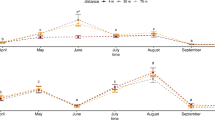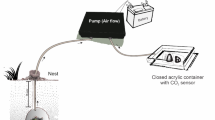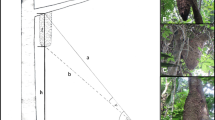Abstract.
Red wood ants (the Formica rufa group) build large nests which can last for many years. The ants often bring large quantities of conifer litter to their mounds. In this study we compared chemical properties of the forest floor and ant-nest materials of red wood ants at two different sites in Sweden. We also did an incubation study in the laboratory to determine C and N mineralisation rates of soil and nest materials at two moisture levels. Some chemical properties, e.g. pH and C/N ratio, differed between sites. Nests were always drier, had a higher C/N ratio and often had higher NH4 + concentrations than the surrounding forest floor. This indicates that the nests increase spatial heterogeneity of the forest floor not only because they contain large amounts of organic matter but also because of qualitative differences in nest composition. In the incubation study, experimentally increased moisture levels in the nest material resulted in net N immobilisation, while surrounding litter and humus materials showed net N mineralisation. The CO2 evolution was clearly increased by increased moisture. Dry conditions in the nest material prevented it from being decomposed and, since there were no plants to take up N, inorganic N accumulated. However, based on our results we hypothesise that ant nests do not produce large amounts of inorganic N as long as the ants bring fresh litter with high C/N ratio to the nests and keep the nests dry. However, the nests can be considered as potential "compost heaps" which probably decompose faster and will be a source of N leaching when the ants no longer maintain the specific dry conditions.
Similar content being viewed by others
Author information
Authors and Affiliations
Additional information
Electronic Publication
Rights and permissions
About this article
Cite this article
Lenoir, L., Persson, T. & Bengtsson, J. Wood ant nests as potential hot spots for carbon and nitrogen mineralisation. Biol Fertil Soils 34, 235–240 (2001). https://doi.org/10.1007/s003740100405
Received:
Issue Date:
DOI: https://doi.org/10.1007/s003740100405




